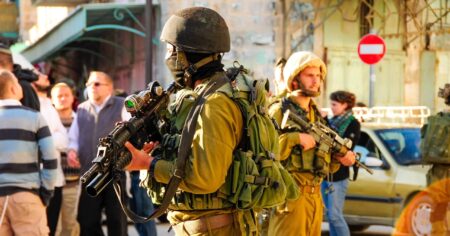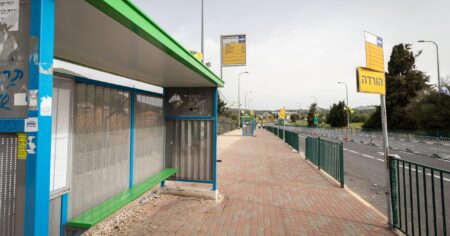One week after President Donald Trump announced that the US recognizes Jerusalem as the capital of Israel, the quiet that has been felt in southern Israel for the past three years has shattered, leaving residents concerned that another conflict is around the corner.
The past week has seen the most serious peak of violence between Israel and Hamas since the end of Operation Protective Edge in 2014. This year, 23 rockets targeted Israel. That includes 12 in the past week, of which four were intercepted and eight struck Israeli territory.
While the rocket fire has been limited to communities around the Hamas-run Gaza Strip, a rocket was intercepted over the city of Ashkelon, some 20 kilometers away.
In comparison, 42 rockets were fired toward Israeli territory from Gaza between 2014 and 2016.
Gazans and Israelis are concerned that the situation is eerily similar to the last conflict in 2014, and one small miscalculation will lead to another deadly war.
Sderot resident Tania Shifer said that hearing warning sirens on an almost daily basis, after years of calm, has unnerved her and has traumatized her four-year-old sister.
“It’s hard when you hear the sirens,” she said. “Whenever one goes off, I always find myself asking, ‘Okay, what now? What do I do? Where do I go?’”
While Hamas is not believed to be behind the rocket fire, IDF Spokesman Brig.-Gen. Ronen Manelis told Army Radio on Thursday morning that the country blames Hamas because the group is held responsible for whatever goes on inside Gaza.
He continued, saying that the deterrence built up since 2014 “wasn’t built in a day, and it won’t come crashing down in a week,” he said, stressing that Israel would not accept anything except total calm in the Gaza Strip.
On Sunday, Manelis said Israel has seen Hamas “taking active measures to prevent further rocket fire,” but with a dozen rockets fired toward Israel, it is clear that Hamas is allowing other militant groups in Gaza to fire rockets toward Israel, escalating the situation.”
“Hamas is playing a double game, and it’s a game we can’t allow,” he told Army Radio on Thursday. “On the one hand, it tries to prevent launches from certain areas, [but]on the other, it calls for an intifada and tries to bring masses of people to protest along the [security]fence.”
Clashes along the border this week left at least two Gazans killed by IDF fire and dozens more wounded. A second “day of rage” has been announced for this Friday.
Hamas officials have said the group is ready to defend itself, adding that it is their right to defend Palestine against Israeli aggression. On Thursday, tens of thousands of people took to the streets of Gaza City to mark the 30th anniversary of the founding of Hamas, chanting slogans and affirming their readiness “to defend Palestine and al-Quds.”
But according to a local Gazan journalist, Hamas will not call for more violence.
“They [Hamas] are aware enough to recognize that the reality is that they have to stop any future war, that the people here are truly exhausted from conflict,” he told the Post in a text message. “They know that really well… and they realize that any war in the near future will be totally different.”
While Hamas militants have professed their readiness for a conflict with Israel, civilians in Gaza have expressed their concern that they will once again be caught in the middle.
“The situation in Gaza is awful,” said Gazan resident Muhammad, who lives in the Shati refugee camp. “I am sure we will have another war, and it scares us… We have children.”
The internal dynamics in the Gaza Strip, including the humanitarian situation that continues to inch closer to its boiling point, combined with Hamas’s 30th anniversary and Trump’s declaration on Jerusalem, have fanned the flames. And even though neither side wants a new round of fighting, the risk of a deadly miscalculation has escalated.
Originally posted at Jerusalem Post.



